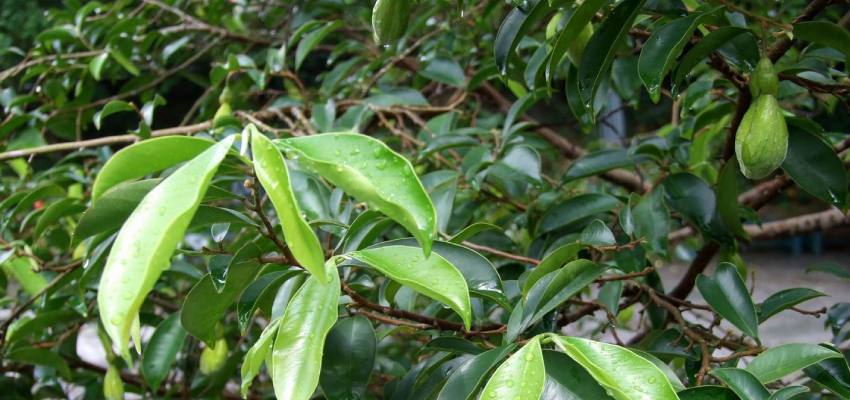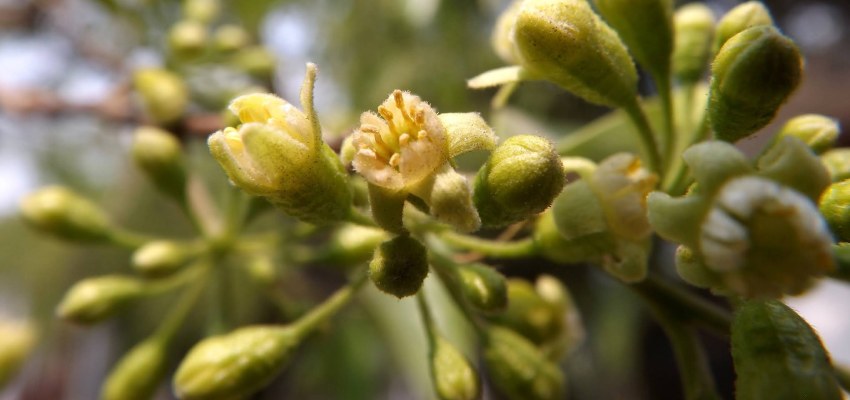Nature has always been a treasure trove filled with fascinating flora and wildlife, some of which carry significance not just in terms of botany but also in terms of cultural relevance, medical significance, and economic significance.
One such appealing example is the Aquilaria agallocha, also known as agarwood, eaglewood, and agaru. This species of Aquilaria is popularly recognised by a variety of names.
This modest tree, with its plain look, has an astonishing secret that has fascinated botanists, perfumers, traditional healers, and civilizations all around the world for ages.
Its unassuming appearance belies the tree’s extraordinary secret. We explore into the varied world of Aquilaria agallocha in this essay, investigating its applications, cultural links, and botanical discoveries.
Botanical Background
Large evergreen Aquilaria agallocha trees, which are members of the family Thymelaeaceae, are found across the tropical areas of Southeast Asia, particularly in nations such as India, Bangladesh, Burma, and Thailand.

From ancient times, the use of Aquilaria agallocha in perfumery, traditional medicine, and other cultural traditions has been indispensable due to the wood’s intoxicatingly aromatic aroma.
The tree is capable of attaining towering heights, frequently surpassing 30 metres, and possesses dense, leathery leaves that add to the aspect that sets it apart from other trees.
Here is brahmi benefits uses, and side effects.
Uses and Significance
One of the most well-known uses of Aquilaria agallocha is in the perfume and fragrance industry, where the heartwood is transformed into a highly desired scented resin after being infected by a special type of mould.

The names “agarwood” and “oud” are frequently used to refer to this resin. The unusual scent of agarwood is a sought-after component in many high-end perfumes and colognes because of its scarcity and outstanding smell.
Second, Aquilaria agallocha has been used for its possible therapeutic characteristics in several traditional treatment systems. Traditional medicines employ the tree’s bark, leaves, and resin to treat skin disorders and gastrointestinal problems.
In particular, the resin is prized for its use in traditional medicines across the world due to the belief that it has anti-inflammatory, analgesic, and antibacterial characteristics.
Aquilaria agallocha’s significance extends beyond the material realm and into the religious and cultural spheres for a number of different people groups.
Agarwood is employed in religious rites, celebrations, and offerings in a wide variety of civilizations across the world. It has a peculiar aroma that is thought to cleanse the air and heighten one’s spiritual awareness.
Agarwood’s great economic worth is a result of its rare fragrant properties. Agarwood is highly sought for on global markets because of its rarity and the difficulty of the production method.
As a result, Aquilaria agallocha populations have been under pressure from overexploitation and illegal trafficking, prompting conservation and management measures.
Read about – Bhringraj Powder
Cultural Connections

- Agarwood in Tamil and Malayalam: In Tamil, the Aquilaria agallocha tree is known as Agil while the agarwood itself is referred to as Agaru. Similarly, in Malayalam, Aquilaria agallocha is known as Akil and agarwood is referred to as Akil Kallu
- Reunion Name in Malayalam: In Malayalam, Aquilaria agallocha is also known as Reunion which could be attributed to its connection with the island of Réunion in the Indian Ocean.
- Agar Tree in Tamil: The term Agil Maram is used to refer to the agarwood tree in Tamil.
- Fumigation: In the context of Aquilaria agallocha, fumigation refers to the practice of using the fragrant smoke produced by burning agarwood as a means of purification and enhancing the ambiance during religious rituals or meditation. In Malayalam, fumigation can be referred to as Dhoomapana.
Also consider reading the ashwagandha benefits.
Botanical Name and Taxonomy
The complicated placement of Aquilaria agallocha within the plant world is reflected in its scientific name, Aquilaria agallocha. It is classified under the Aquilaria genus and is a member of the Thymelaeaceae family of plants.
The scientific name for this species is agallocha, which comes from the Greek word for the tree’s fragrant wood.
You may also like to read – Wheat Grass Powder
Conservation Efforts and Sustainability
Aquilaria agallocha populations are under substantial stress as a result of the high demand for agarwood and the unsustainable harvesting techniques that have resulted from this demand.

As a direct consequence of this, the species has been assigned the status of “endangered” on the Red List maintained by the International Union for the Conservation of Nature (IUCN).
Several nations have come to the realisation that the need for conservation is urgent and are now taking steps to safeguard the species.
These steps include the promotion of environmentally friendly methods of production and the enforcement of rules that prohibit unlawful harvesting and trading.
Also read about – Rose Water For Hair
Conclusion
The history of the Aquilaria agallocha, often known as the agarwood tree, is an intriguing adventure that leads us across the worlds of traditional medicine, spirituality, and cultural activities.
It is a fascinating plant that continues to intrigue people all over the world because of its cultural importance as well as its potential to generate the highly prized agarwood resin.
It is crucial that as we move forward, we find a way to strike a balance between our respect for this wonderful tree and the requirement to safeguard and maintain it for future generations.
We can ensure that the aura of mystery surrounding Aquilaria agallocha will endure by employing environmentally friendly practices and gaining a deeper understanding of the significance of its ecological role. This will allow our lives to be enriched and bring us closer to the wondrous natural world.
Consider reading –
- Best Contact Lenses Brand
- Best Vitamin C Serum In India
- Teeth Pain Tablet Name List
- Best Tablet For Loose Motion